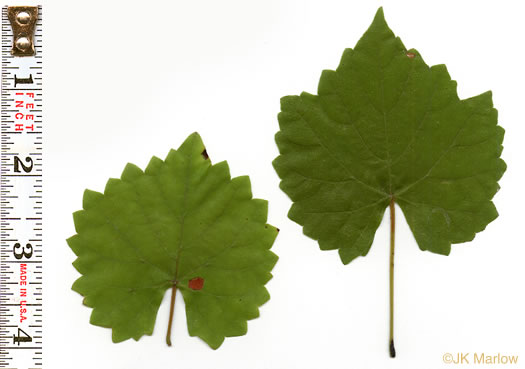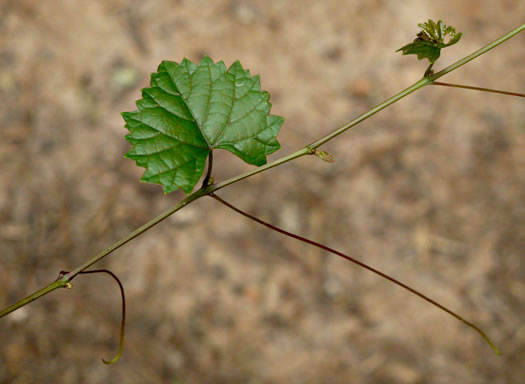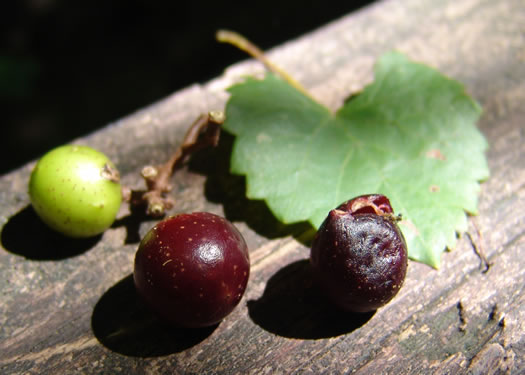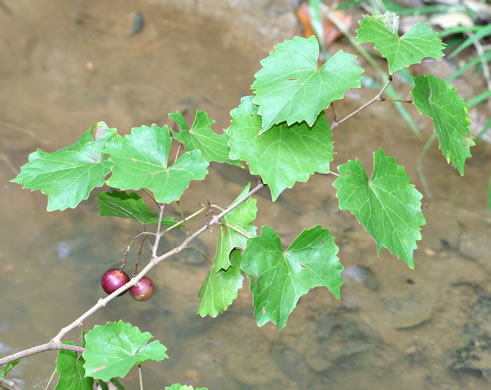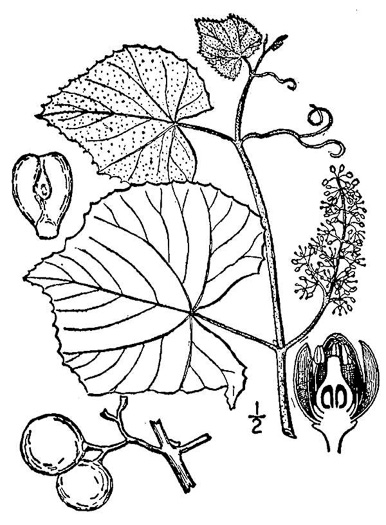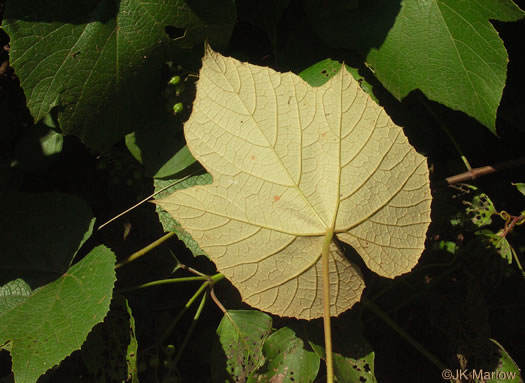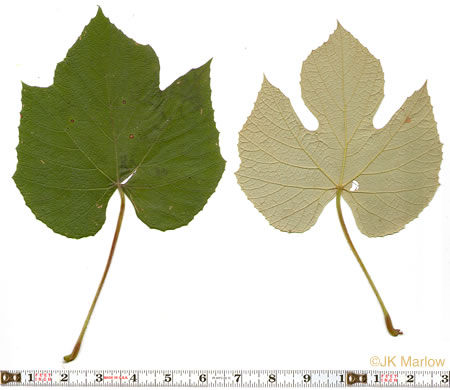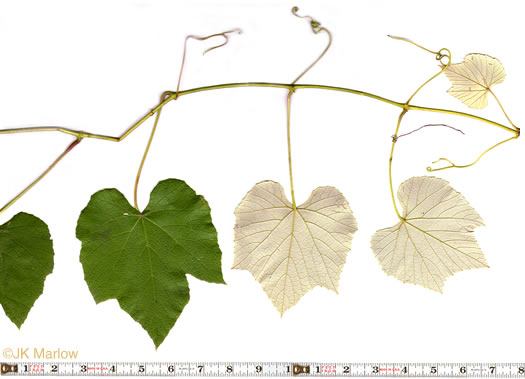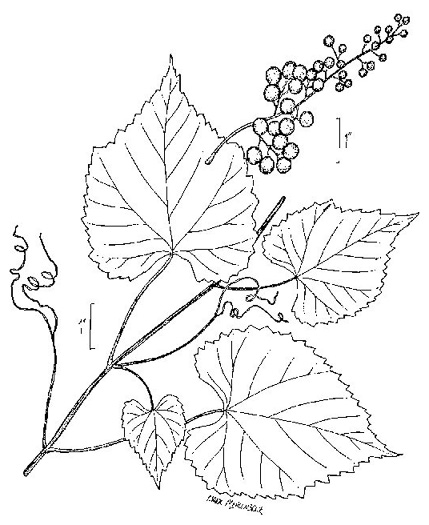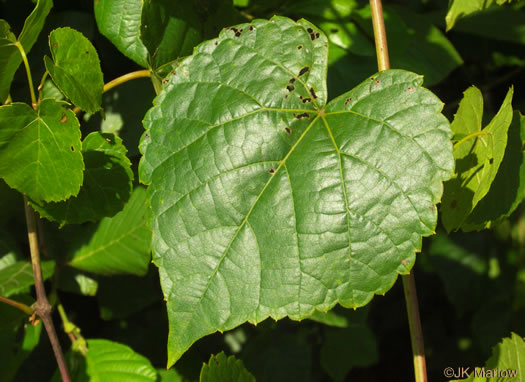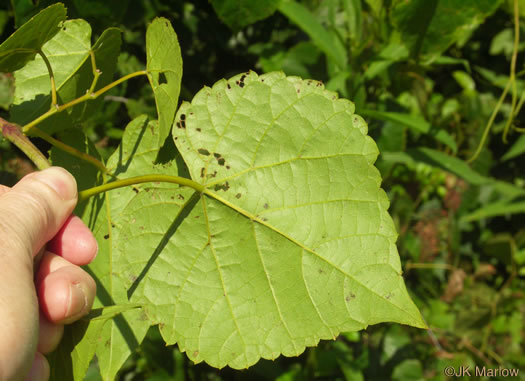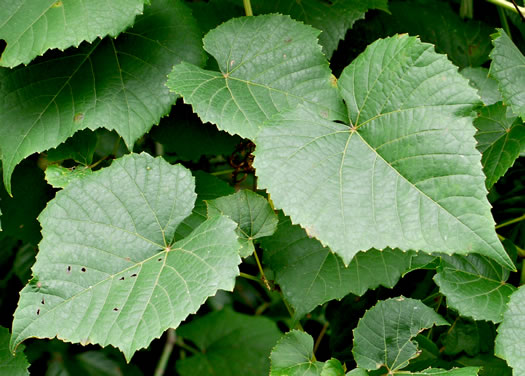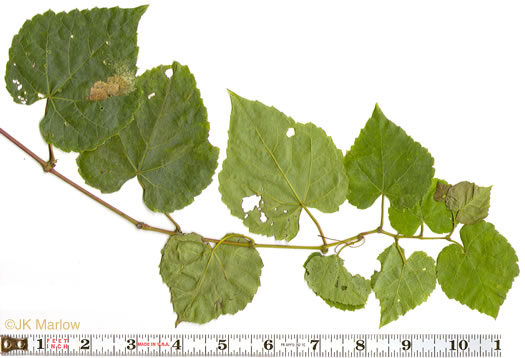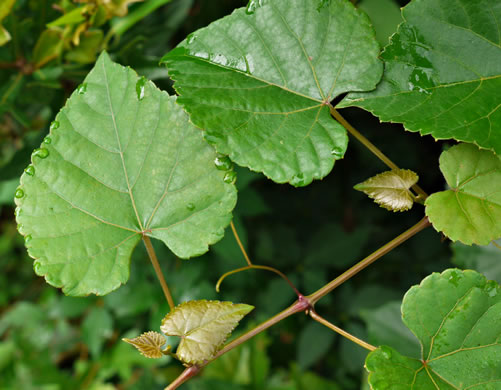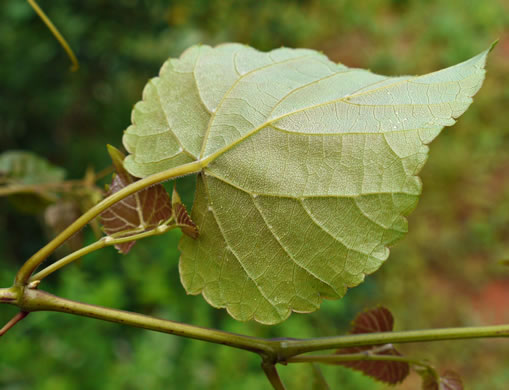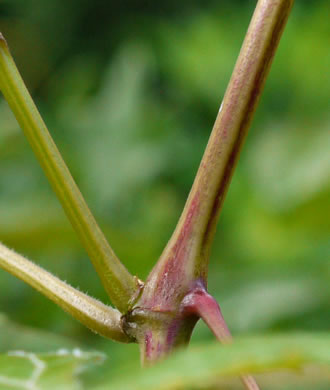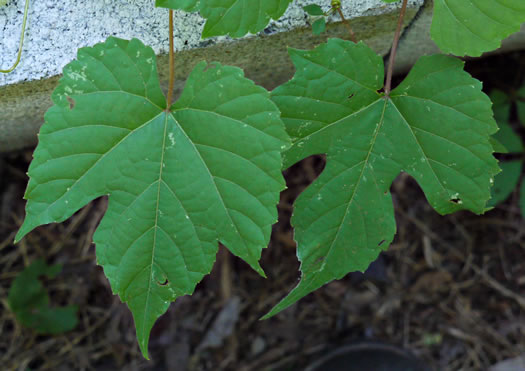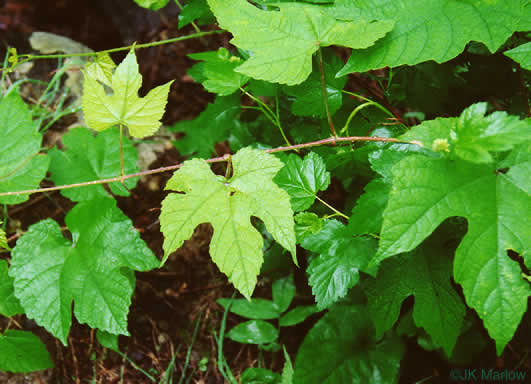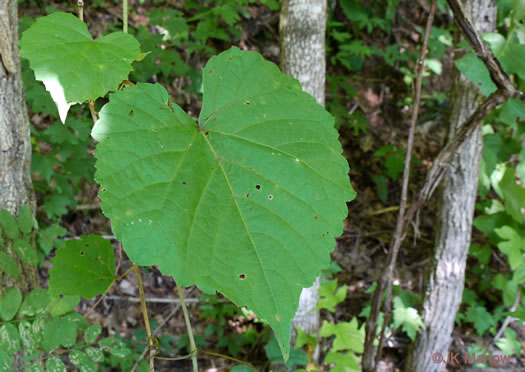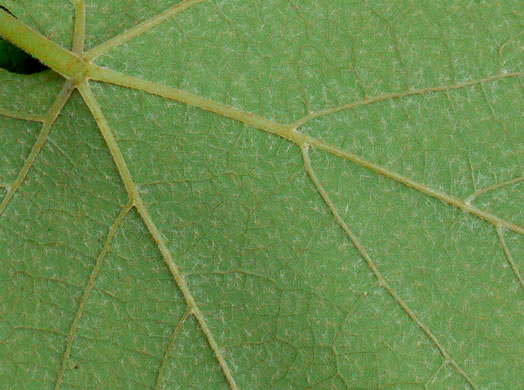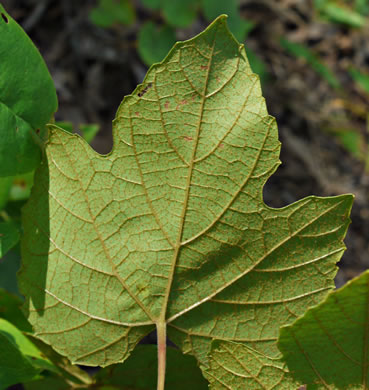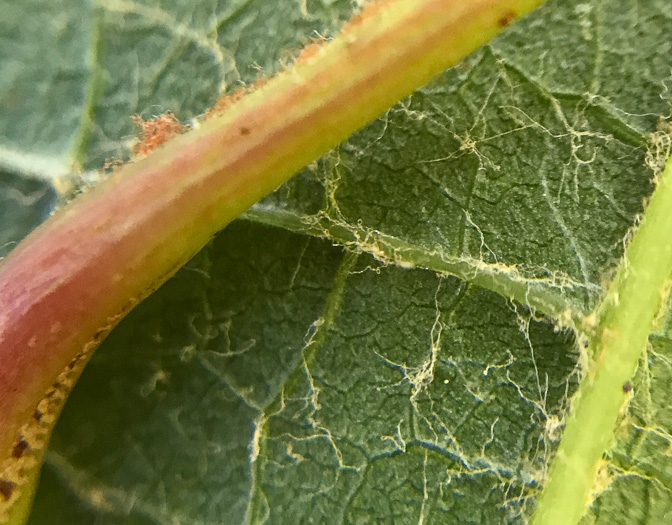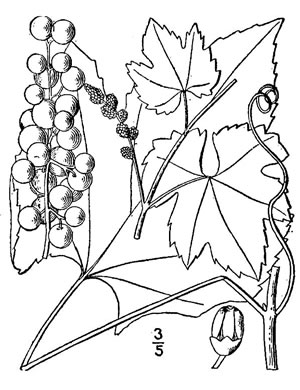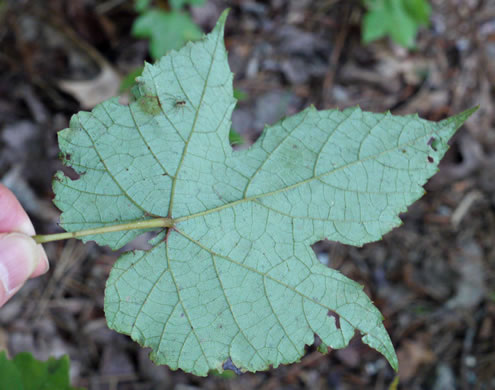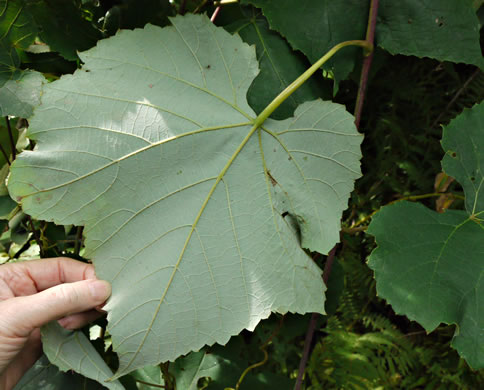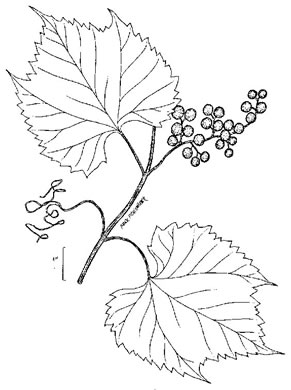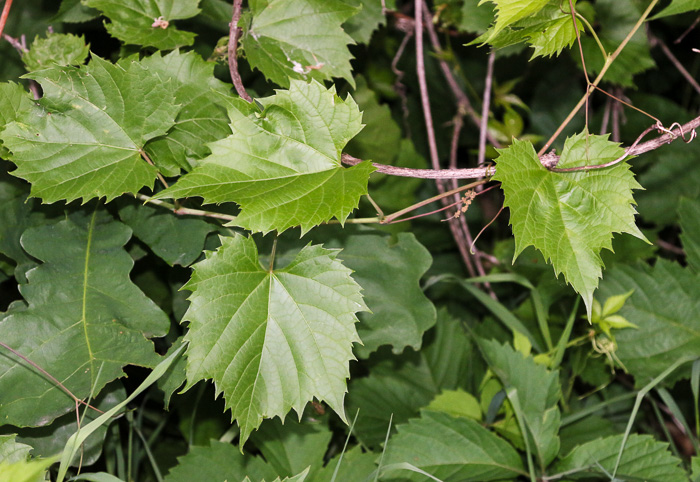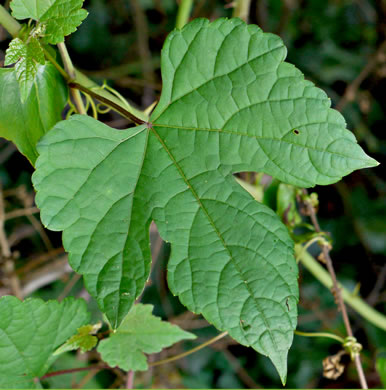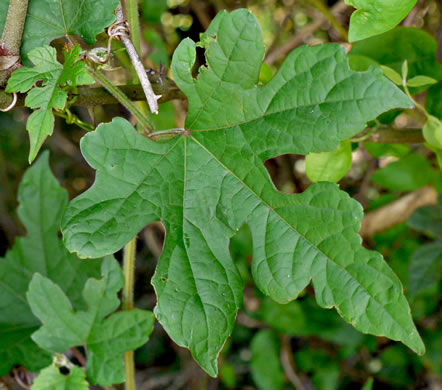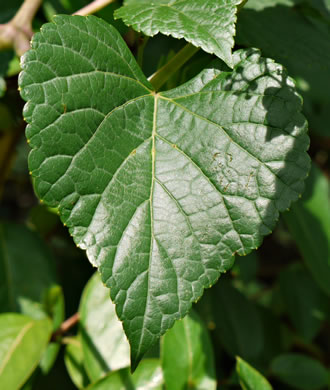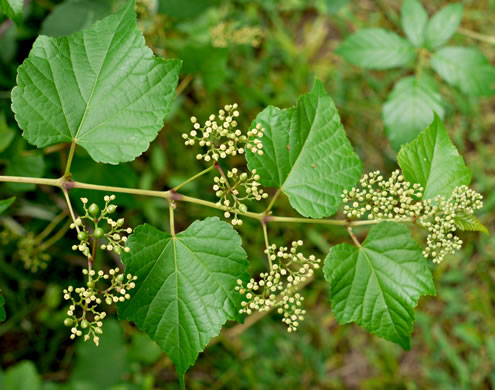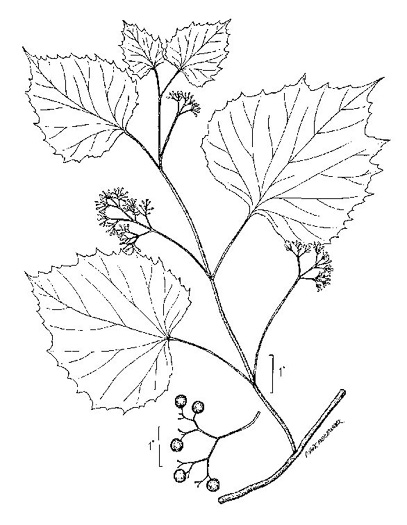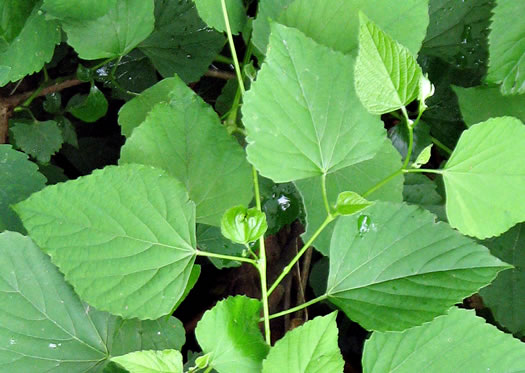Your search found 33 image(s) of leaves of grape-like species.
To see larger pictures, click or hover over the thumbnails.
To go to the plant's detail page, click its name.
 Habitat: Dry upland forests (especially sandy or rocky), other forests, swamps, dunes, roadsides, thickets
Habitat: Dry upland forests (especially sandy or rocky), other forests, swamps, dunes, roadsides, thickets
Leaves 2 to 4" long with large and distinct (dentate) teeth, per Woody Plants of the Blue Ridge (Lance).
Tendrils not forked (whereas those of other grapes are usually forked), per Woody Plants of the Southeastern US: A Winter Guide (Lance, 2004).
Fruit green turning red to purple to black, occ bronze; tan spots when ripe, per Forest Plants of the Southeast and Their Wildlife Uses (Miller & Miller, 2005).
The berries, thick-skinned grapes, in clusters of 1-few, per Forest Plants of the Southeast and Their Wildlife Uses (Miller & Miller, 2005).
 Habitat: Forests and woodlands, mainly in wet to moist situations
Habitat: Forests and woodlands, mainly in wet to moist situations
A dense matting of rusty, tawny to whitish, cobwebby hairs beneath, per Native Shrubs and Woody Vines of the Southeast (Foote & Jones, 1989).
Leaves felty below, brownish hairs mostly concealing the leaf surface, per Woody Plants of the Blue Ridge (Lance).
Twigs bear tendrils at about every node, per Woody Plants of the Blue Ridge (Lance).
 Habitat: Forests and woodlands, primarily upland, but also in bottomlands
Habitat: Forests and woodlands, primarily upland, but also in bottomlands
Marginal teeth convex on each side, per Woody Plants of the Blue Ridge (Lance).
Leaves green below, glabrous or slightly hairy on the veins, per Woody Plants of the Blue Ridge (Lance).
Blades cordiform (deeply lobed leaves found only on ground shoots), per Upper Canopy Collection and Identification of Grapevines (Vitis) from Selected Forests in the Southeast US (Everhart, 2010).
Twigs with tendril absent at least every third leaf, per Woody Plants of the Blue Ridge (Lance).
 Habitat: Forests and woodlands, mostly bottomlands
Habitat: Forests and woodlands, mostly bottomlands
Leaves glabrous to very slightly arachnoid-pubescent beneath, per Weakley's Flora (2015).
Branchlets of the season angled; nodes usually banded with red pigmentation, per Weakley's Flora.
Leaves often deeply lobed, per Weakley's Flora.
 Habitat: Forests and woodlands, mostly upland
Habitat: Forests and woodlands, mostly upland
Opposite every 3rd leaf there is neither tendril nor flower cluster, per Newcomb's Wildflower Guide (Newcomb, 1977).
Leaves cordate to orbicular, unlobed or 3-5 lobes, dentate to crenate, per Forest Plants of the Southeast and Their Wildlife Uses (Miller & Miller, 2005).
Mature leaves glaucous beneath (the glaucescence sometimes rather obscured by pubescence), per Weakley's Flora (2023).
Lower leaf surface glaucous, pubescence white to more commonly rusty orange, per Upper Canopy Collection and Identification of Grapevines (Vitis) from Selected Forests in the Southeast US (Everhart, 2010).
Mature leaves slightly to strongly arachnoid-pubescent beneath, per Weakley's Flora (2023).
 Habitat: Forests and woodlands, mostly upland
Habitat: Forests and woodlands, mostly upland
Mature leaves glaucous beneath and glabrous to glabrate beneath, per Weakley's Flora (2015).
 Habitat: Forests and woodlands, mostly moist to wet
Habitat: Forests and woodlands, mostly moist to wet
Leaf teeth are ciliate on the margin, acute or convex on only one side, per Woody Plants of the Blue Ridge (Lance).
 Habitat: Riverbanks, thickets and disturbed areas
Habitat: Riverbanks, thickets and disturbed areas
Leaves may have multiple incised, rounded to scalloped lobes, per A Field Guide for the Identification of Invasive Plants in Southern Forests (Miller, Chambliss, & Lowenstein, 2010).
Leaves heart-shaped in outline but variable in form, per A Field Guide for the Identification of Invasive Plants in Southern Forests (Miller, Chambliss, & Lowenstein, 2010).
Leaves simple and palmately veined (grape-like), 3(-5) lobed, per Weakley's Flora (2012).
 Habitat: Moist forests, bottomlands, and thickets, particularly where disturbed
Habitat: Moist forests, bottomlands, and thickets, particularly where disturbed
Leaves simple, grape-like, not lobed, to 12cm long and 9cm wide, per Weakley's Flora.

